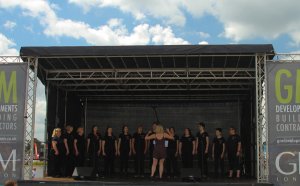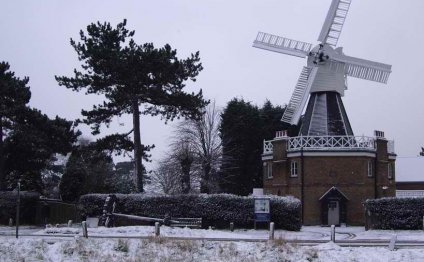
Wimbledon Common Windmill
Wimbledon Windmill is a level II* listedwindmill situated on Wimbledon typical inside London Borough of Merton (originally in Surrey), inside western of South London, and it is maintained as a museum.
History[edit]
A software to create a windmill on typical was rejected in 1799 once the candidate, one John Watney, neglected to create programs for proposed mill when requested. In 1816, Charles March, a carpenter of Roehampton requested authorization to create a windmill. The demand ended up being provided here year and also the mill ended up being built. The mill stopped involved in 1864, whenever miller was evicted by the Lord for the Manor, Earl Spencer, just who desired to enclose the common for his or her own usage. The miller insisted on getting rid of all of the machinery so your mill could not be run in competition with his other mills at Kingston. The key mill building was reconstructed with brickwork to provide residing accommodation.
The enclosure of typical had been strongly opposed by the local people, which effectively got the 1871 Wimbledon and Putney Commons Act passed, handing the care of the commons to elected and appointed conservators. In 1892, tenders for the fix of mill had been looked for by the Commons Conservators, and Messrs. Sanderson & Sons tender of £240 ended up being accepted. Royal Wimbledon club added £50 towards the price of the fixes. During repair works, it was unearthed that the main Post and Crosstrees were rotten and Sandersons recommended converting the mill to a smock mill, at a complete price of £350. The work ended up being reported as being full in November 1893. The original Patent sails were changed by a shorter group of sails with fixed shutters. After the reduced a sail inside 1920s another pair of sails with a lot fewer shutters was put on the mill.
During World War II, the mill ended up being camouflaged with a dull green system to reduce its exposure, since it was at close distance to army camps put up in the Common. The mill had been repainted following the war finished, but the sails had been stopped in 1946 as a result of exorbitant wear in the gearing. In 1952, the mill ended up being inspected and a listing of repairs drawn up. After a public charm in 1954 to raise funds, the mill was restored and also the sails switched once more on 25 might 1957. The mill was restored once again in 1975 and turned into a museum. In 1999 a grant from Heritage Lottery Fund enabled the Patent sails is restored to working order. The museum, in the beginning just using one flooring but stretched to two in 1999, portrays the storyline of windmills from their early origins around the present day, utilizing models, examples of machinery and resources of this trade. A room from a single for the smaller flats is preserved to illustrate how the building was utilized as accommodation. It really is no further a functional mill, but a finely step-by-step model reveals the equipment since it was in its working days.
On 2 August 2015, a sail fell through the mill, harming the base below.
Description[edit]
Wimbledon Windmill had been built as a hollow post mill, using the drive towards the stones moving through the center for the main post. It was a hollow post mill for the entire performing life, but had been rebuilt as a smock mill with regards to ended up being maintained in 1893. The mill features double Patent sails and is winded by a fantail. The windmill features an octagonal stone base of two tales, above which will be a conical tower formerly housing the primary post. The cast-iron windshaft holds four two fold Patent sails, and a 6 legs (1.83 m) diameter cast-iron Brake Wheel with about 60 wood cogs, which formerly drove the cast-iron Wallower carried on a cast iron Upright Shaft. A Spur Wheel on lower end associated with the upright shaft might have driven the millstones on top floor regarding the mill. The conversion from Hollow article mill to a Smock mill had been done-by Sanderson's, the Louth millwrights.
Millers[edit]
- Dann – 1840
- A Halloway – 1858.
- John Marsh – 1860s
References for above:-
Culture and media[edit]
The Mill House of is when Robert Baden-Powell stayed in 1902 and published components of, which was published in 1908. Wimbledon Windmill in addition featured inside Doctor which episode titled which was filmed in 1966.
Public access[edit]
The windmill has become a museum, detailing its own history, plus the reputation for windmills as a whole. The museum is available at vacations and Bank Holidays from March to October. It features interactive displays, like push-button designs and grain-grinding tasks, and site visitors to be able to explore the layout and employ associated with the real mill. The windmill and also the nearby cafe are situated regarding the Common next to both open rooms and woodland.
RELATED VIDEO

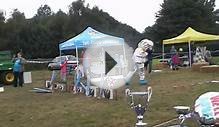
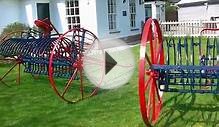
Share this Post
Related posts
Wimbledon Common Walk
The weather is a very important part of hill walking. Weather conditions and daylight hours will dictate where you walk…
Read MoreWimbledon Common Fair
At G M Developments we trust being element of our local community while having sponsored different regional baseball teams…
Read More
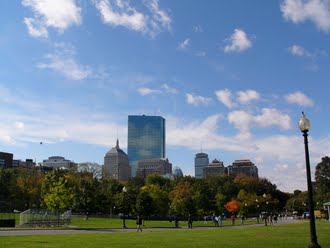 Common land (a common) is land owned collectively or by one person, but over which other people have certain traditional rights, such as to allow their livestock to graze upon it, to collect firewood, or to cut turf for fuel. Originally in medieval England the...
Common land (a common) is land owned collectively or by one person, but over which other people have certain traditional rights, such as to allow their livestock to graze upon it, to collect firewood, or to cut turf for fuel. Originally in medieval England the...
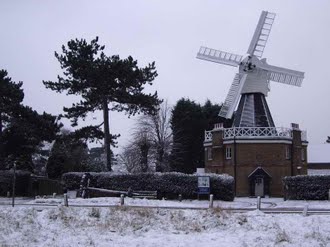 Wimbledon Windmill (grid reference TQ 230 725) is a grade II* listed windmill situated on Wimbledon Common in the London Borough of Merton (originally in Surrey), in the west of South London which is preserved as a museum.
Wimbledon Windmill (grid reference TQ 230 725) is a grade II* listed windmill situated on Wimbledon Common in the London Borough of Merton (originally in Surrey), in the west of South London which is preserved as a museum.
